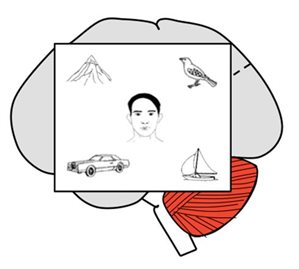
Professor Chris Miall and four of his undergraduate students have published a study in Neuropsychologia which shows that linguistic prediction can either be disrupted or facilitated using electrical brain stimulation (TDCS), depending on the polarity of the electrical stimulation.
This was a follow-up study to a paper published in 2012 by Elise Lesage, Chris Miall and others, which showed that language processing could be disturbed when the right cerebellum was temporarily disrupted with repetitive TMS, another form of brain stimulation.
The cerebellum is a brain area known to help control movements but also seems to have roles in cognitive functions including language.
Importantly, in both of these studies, the teams modulated participants’ performance only for sentences that were predictable, and did not affect their performance for non-predictable sentences. (For example, in a sentence like “the man will sail the boat”, the final word is predictable from the verb “sail” unlike a sentence like “the man will watch the …” - see image on right) This rules out that the results were due to changes in motor control.
Overall, the paper’s findings support the growing evidence for the cerebellum playing a role in predictive processing of spoken language, consistent with its predictive role as a forward model for motor control. How it does this, and on the basis of what input signals remains to be answered.
Reference
Miall RC, Antony J, Goldsmith-Sumner A, Harding SR, McGovern C, Winter JL (2016) Modulation of linguistic prediction by TDCS of the right lateral cerebellum. Neuropsychologia 86 (2016) 103–109
http://www.ncbi.nlm.nih.gov/pubmed/27126840